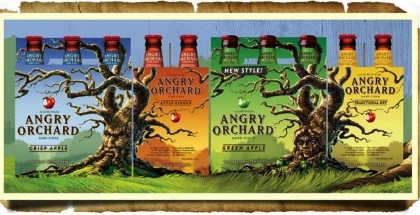Book Review & Interview | The Beer Lover’s Guide to Cider by Beth Demmon
Esteemed beer writer Beth Demmon has written a book for beer lovers who are curious about the growing craft cider movement. The Beer Lover’s Guide to Cider: American Ciders for Craft Beer Fans to Explore (Mango Publishing, September 12) demystifies the potentially overwhelming variety of the modern cider scene through the lens of beer, relating cider varieties to major flavor groupings familiar to craft beer fans.
As modern drinkers become more adventurous with their choices and less tied to any one particular drinks segment, it makes sense that craft beer fans would start exploring other beverages besides beer. Demmon’s book provides an easy introduction to one of those options.
“By putting together a framework that a lot of people understand, I thought it would help people take that first step into exploring a new-to-them beverage instead of being confused on where to start,” she explains.

To Beer or Not to Beer
Demmon has been writing about beer for years, and got her start covering the beverage in one of craft beer’s capitals: San Diego. After a decade of covering the industry however, she questioned whether she was limiting herself by sticking to only one beverage segment. A fortuitous trip to CiderCon in 2020 to speak on a panel was eye-opening for her, and she quickly discovered she had a new interest. She also recognized an opportunity to introduce her fellow beer lovers to her new fascination.
“I got interested in it as a journalist observing what was going on, but the more I drank cider, the more I realized it was interesting to me [personally]”, she says. “This was something that a lot of people weren’t talking about outside of a historical frame of reference.”
Cider has been brewed and enjoyed here in the U.S. for centuries, and there were points in the country’s history when cider was the preeminent beverage for the young nation. By the end of the twentieth century, however, cider has long since given way to beer, wine, and spirits. Like many other artisan food and beverage industries however, cider is experiencing a resurgence in popularity, and Beth is excited about where it’s heading.
She points out in the book that devotion to that historical tradition can, at times, hold cider back from opportunities for growth. At one point she expresses that cider can at times prefer “to wax nostalgic about this glorious past rather than create a new future,” but she thinks it can do both.
“It’s very important to look at how industries were built and how traditions can be honored, but if you stop there, what’s the point? You just get stuck in this quagmire of nostalgia,” she says. She thinks there are many things cider and beer can learn from each other, and wants to see cider emulate some of beer’s successes to reach consumers who are open to trying new things.
In one important way, cider is learning from one of craft beer’s mistakes that has led to major challenges within the modern beer industry. She points out in the book that while cider is not notably more racially diverse than beer, the American Cider Association is taking proactive steps to promote diversity, equity, and inclusion in the burgeoning industry at an early stage. This is an area in which craft beer is having to backtrack and attempt to implement change, with mixed results.
“I think cider can look to the future and maybe beer can look to the past a bit,” she explains.
A Helpful Guide
After briefly introducing us to the basics of cider, Demmon efficiently moves to the main body of the book: recommendations for ciders to try based on the reader’s beer preferences.
In the “Belgian & Farmhouse Ciders” chapter, for example, she provides recommendations for ciders that might be enjoyed by a fan of Saisons, abbey ales, Witbiers, and other yeast-driven ale styles. In “Imperial Ciders,” she highlights strong ciders that might appeal to fans of Barleywine and other strong beer styles. Other chapters look at introductory ciders for fans of lighter beer styles, specialty ciders for fans of pumpkin ales and Rauchbiers, and many others. There’s even a chapter on hopped ciders, showing the possible crossovers between the beer and cider and new avenues for enjoying one of beer’s favorite ingredient.
In each entry, she introduces readers to the cidery and provides details on the specific cider, including evocative but approachable tasting notes. Food pairings and educational asides are sprinkled throughout.
“Getting into a new segment that you’re unfamiliar with can be really overwhelming,” says Demmon. “I don’t necessarily want to become a wine person because it seems like there’s a lot of stuff that you already have to know just to go out and enjoy a glass of wine. Cider can feel that same way, and I wanted to take that tension away from the very beginning so that people feel comfortable using the knowledge that they already have to apply it in a new way.”
The Beer Lover’s Guide to Cider is an accessible and entertaining introduction to the world of craft cider, making it easy for beer lovers to explore a new beverage on their own terms. Demmon manages to strike the difficult balance of providing knowledgeable, actionable information while maintaining a fun, unintimidating tone that invites curiosity. If you’re a beer lover who’s at all curious about cider, this is the book for you.
Listen to David’s interview with Beth here.

Article photos by Jessica Hicks. Banner photo by David Nilsen. Banner headshot by Rick Soublet.








Submit a Comment